
Thursday, August 3rd, 2023
Five Things I Didn't Know about Jean-Michel Basquiat
Cover image: Entrance to Basquiat Soundtracks exhibition
© Entrée to Black Paris
The extraordinary Basquiat Soundtracks exhibition at the Philharmonie de Paris closed on July 30, 2023. I went to see it last week, having missed the Basquiat x Warhol exhibition at the Fondation Louis Vuitton, which closed on July 28.
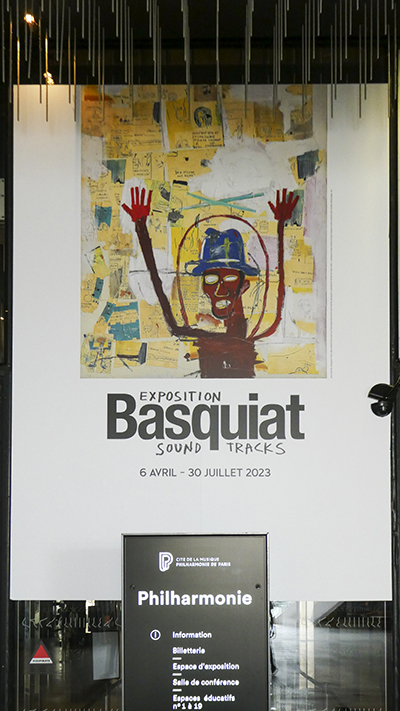
Entrance to Basquiat Soundtracks exhibition
© Entrée to Black Paris
I am not a fan of Basquiat's work from an esthetic standpoint, but I have always been intrigued by the factors that propelled his art to the tremendous heights it achieved in terms of acclaim and monetary value long before his premature death.
Basquiat Soundtracks, which was curated in collaboration with the Musée des Beaux Arts Montréal, opened a vast and unusual window onto Basquiat's world. It explored the profound impact that music ‒ from hip-hop to classical ‒ had on the artist's œuvre.
I spent almost five hours in the exhibition, immersed in sound, video, and visual art.
In today's blog post, I am presenting five tidbits of information from the exhibition that I found to be the most illuminating or compelling among all that I learned about this brilliant young man who left our world at the tender age of 27 years.
Hip-Hop Single
In 1983, Basquiat produced a record called "Beat Bop." It featured two rapper/graffiti artists, Rammellzee and K-Rob, and it was released on Basquiat's own label ‒ Tartown Records.
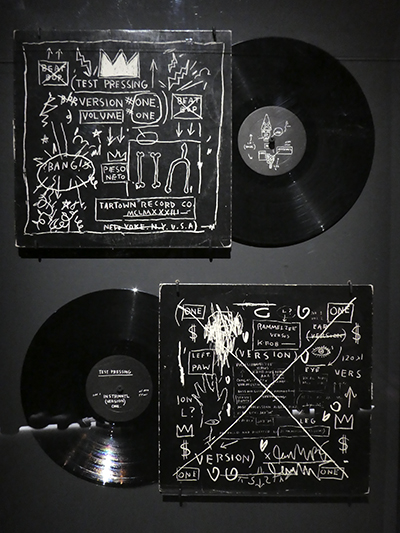 "Beat Bop" - vinyl record and cover art by Jean-Michel Basquiat
"Beat Bop" - vinyl record and cover art by Jean-Michel Basquiat
Image © Entrée to Black Paris
Rammellzee was represented in multiple photos in the exhibition as well as in a Basquiat portrait.
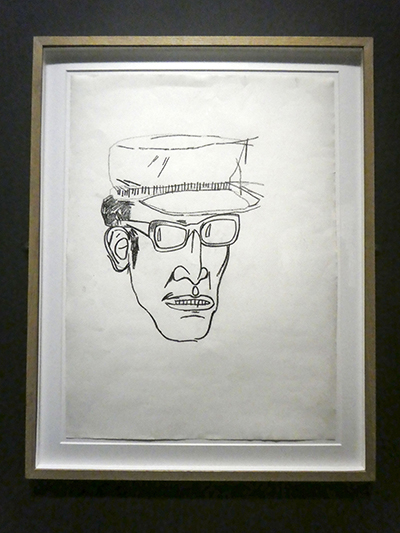
Rammellzee
1982 Oil stick on paper
© Estate of Jean-Michel Basquiat
Image © Entrée to Black Paris
Interest in Human Anatomy
At the age of seven years, Basquiat was hospitalized after being hit by a car. His mother bought him a copy of Gray's Anatomy, a reference book for human anatomy that was published in 1868, to keep him amused. The subject fascinated him for the rest of his life, and he frequently included anatomical drawings in his work when he created art.
_1982_Acrylic, oil stick and paper collage on canvas_J.M. Basquiat_400px wide.jpg) Negro Period (detail)
Negro Period (detail)
1982 Acrylic, oil, photocopy collage and caps on wood panels
© Estate of Jean-Michel Basquiat
Image © Entrée to Black Paris
_Acrylic, oil stick, photocopy and wood collage on wood panel_1986_J.M. Basquiat_400px wide.jpg)
Jazz (detail)
1986 Acrylic, oil stick, photocopy and wood collage on wood panel
© Estate of Jean-Michel Basquiat
Image © Entrée to Black Paris
He even created a stand-alone body of work entitled The Complete Anatomy Series.
Gray - the Band
Basquiat played clarinet and synthesizer. In 1979, he and an acquaintance named Michael Holman formed an experimental band called Test Pattern, which performed under various names before he changed the name to Gray (after Gray's Anatomy). In the original group, Holman played drums, Shannon Dawson played trumpet, and Wayne Clifford played keyboard. Holman was eventually replaced by Nicholas Taylor, who played guitar. The band performed together through 1980-81 but never recorded an album during Basquiat's lifetime.
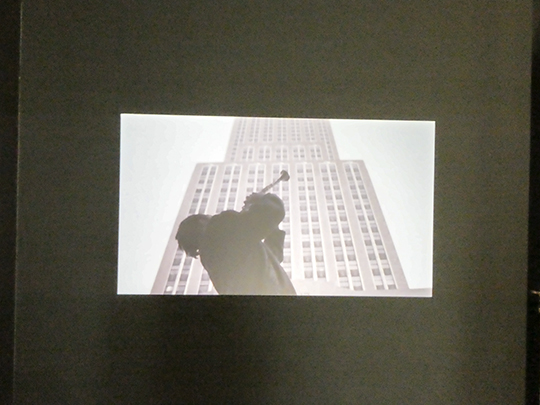 Snapshot of brief video of Basquiat playing clarinet
Snapshot of brief video of Basquiat playing clarinet
Image © Entrée to Black Paris
Heavy Jazz Influence
The exhibition presented jazz as the most formidable musical influence on Basquiat's work. The information panel for this section of the exhibition indicated that his works "inscribe the genre within a broader diasporic history and underscore the inequality and racism endured by jazz musicians in thrall to the rule of the record industry."
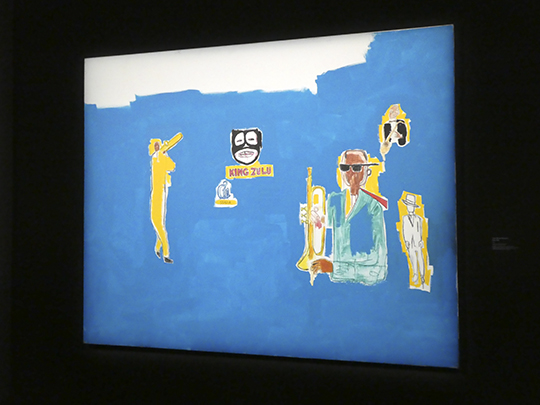 King Zulu
King Zulu
1985 Acrylic, wax and oil stick on canvas
Museu d'Art Contemporani de Barcelona
© Estate of Jean-Michel Basquiat
Image © Entrée to Black Paris
The panel also cited Basquiat's strong interest in bebop and his particular affiliation for Charlie Parker. In several of the works shown in Soundtracks, Basquiat made reference to Parker's daughter Pree, who died at the age of two years.
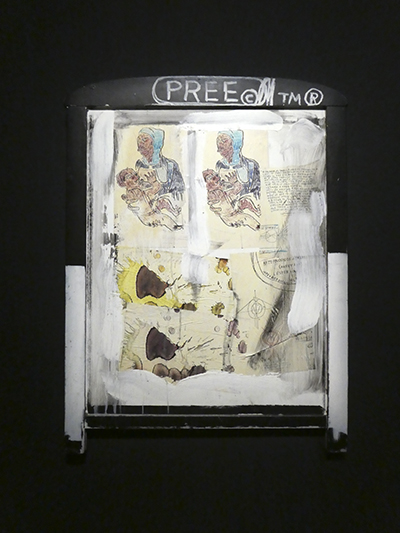 Madonna
Madonna
1985 Acrylic, oil stick, photocopy collage on wood
© Estate of Jean-Michel Basquiat
Image © Entrée to Black Paris
Basquiat is said to have owned more than 3000 albums. He wrote out the titles of works recorded by major jazz artists and even copied liner notes from Charlie Parker's "Complete Savoy Studio Sessions" by hand. An information panel on the artist's discography stated that by "meticulously writing out titles, performers, matrix numbers, references, logos and labels, Basquiat demonstrated his esteem for these objects: scattered throughout his canvases in the form of photocopies, records are held up as trace, fetish, memory, and artistic testament."
Lover of Classical Music
In September 1982, art dealer Annina Nosei offered Basquiat her basement for use as a studio. He accepted the offer and reportedly painted while listening non-stop to Ravel's Boléro.
The last two works exhibited at Soundtracks, Eroica I and Eroica II take their names from Beethoven's Symphony No. 3. They were completed and exhibited in 1988, the year that Basquiat died from a heroin overdose.
 on paper mounted on canvas_1988_J.M. Basquiat_540px wide.jpg) Eroica I and Eroica II
Eroica I and Eroica II
1988
© Estate of Jean-Michel Basquiat
Image © Entrée to Black Paris
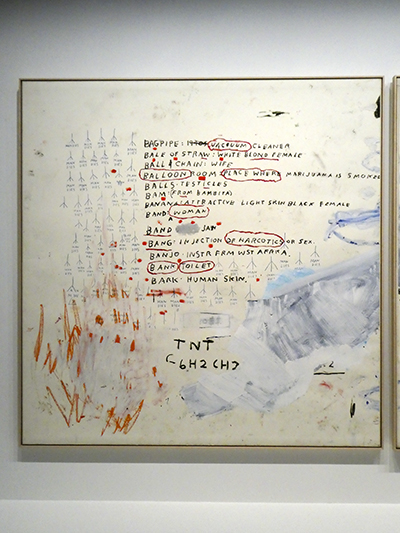
Eroica I
1988 Acrylic, oil stick and graphite on paper mounted on canvas
© Estate of Jean-Michel Basquiat
Image © Entrée to Black Paris
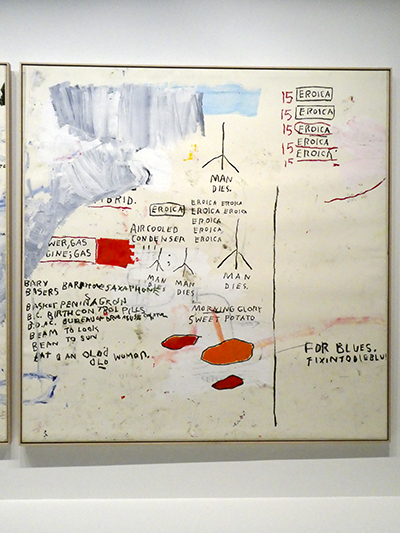
Eroica II
1988 Acrylic and oil stick on paper mounted on canvas
© Estate of Jean-Michel Basquiat
Image © Entrée to Black Paris
Before leaving the exhibition, visitors were invited to look at a list of the 100+ audio recordings that played throughout the exhibition space. Find the playlist at the QR code shown below.
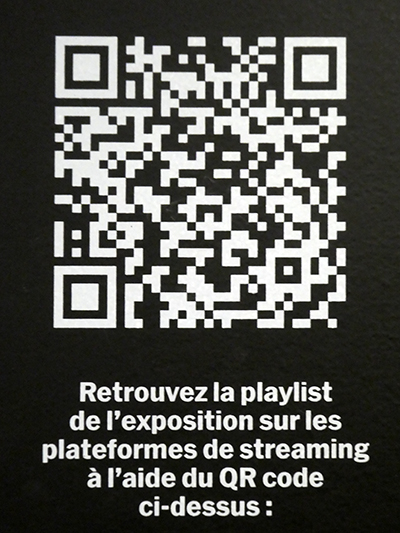

 Our Walk: Black History in and around the Luxembourg Garden - Click here to book!
Our Walk: Black History in and around the Luxembourg Garden - Click here to book!